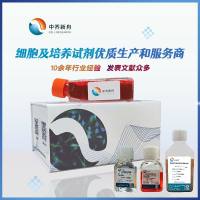How do I decontaminate my tissue culture
互联网
When an irreplaceable culture becomes contaminated, researchers may attempt to eliminate or control the contamination. First, determine if the contamination is bacteria, fungus, mycoplasma, or yeast. Isolate the contaminated culture from other cell lines. Clean incubators and laminar flow hoods with a laboratory disinfectant, and check HEPA filters. If the cell line or culture is not one-of-a-kind, it is best to throw it away and start over with new cells. However, you may try to save the culture with the following procedure.
Antibiotics and antimycotics at high concentrations can be toxic to some cell lines. Therefore, perform a dose response test to determine the level at which an antibiotic or antimycotic becomes toxic. This is particularly important when using an antimycotic such as Fungizone or an antibiotic such as tylosin. The following is a suggested procedure for determining toxicity levels and decontaminating cultures.
(1) Dissociate, count, and dilute the cells in antibiotic-free media. Dilute the cells to the concentration used for regular cell passage.
(2) Dispense the cell suspension into a multiwell culture plate or several small flasks. Add the antibiotic of choice to each well in a range of concentrations. For example, we suggest the following concentrations for Fungizone: 0.25, 0.50, 1.0, 2.0, 4.0, and 8.0 µg/ml.
(3) Observe the cells daily for signs of toxicity such as sloughing, appearance of vacuoles, decrease in confluency, and rounding.
(4) When the toxic antibiotic level has been determined, culture the cells for two to three passages using the antibiotic at a concentration one to two-fold lower than the toxic concentration.
(5) Culture the cells for one passage in antibiotic-free media.
(6) Repeat step 4.
(7) Culture the cells in antibiotic-free media for four to six passages to determine if the contamination has been eliminated.








